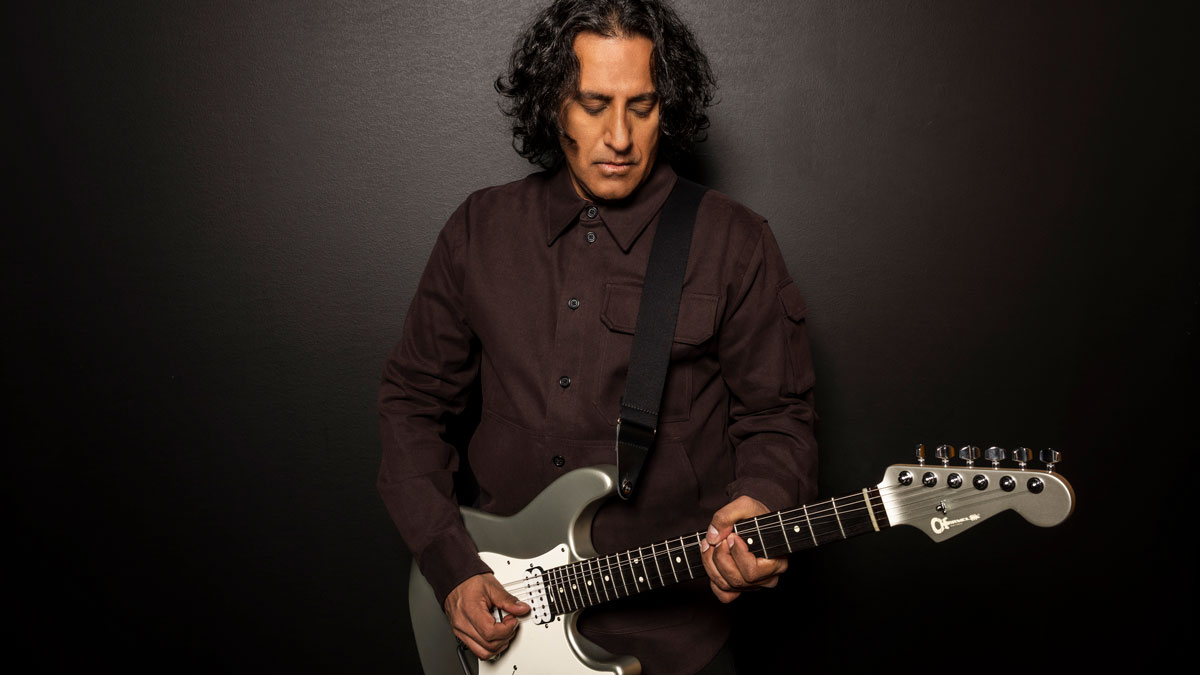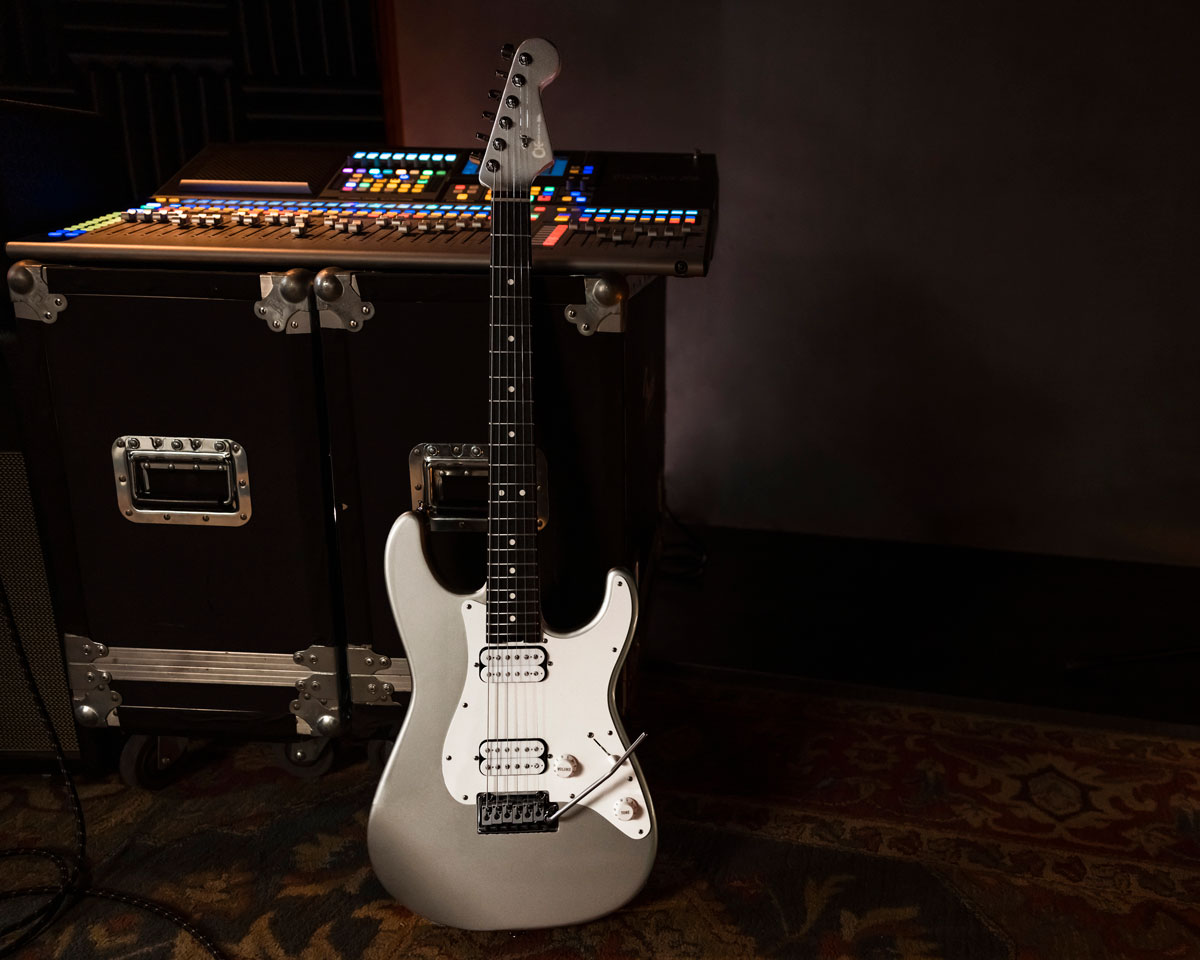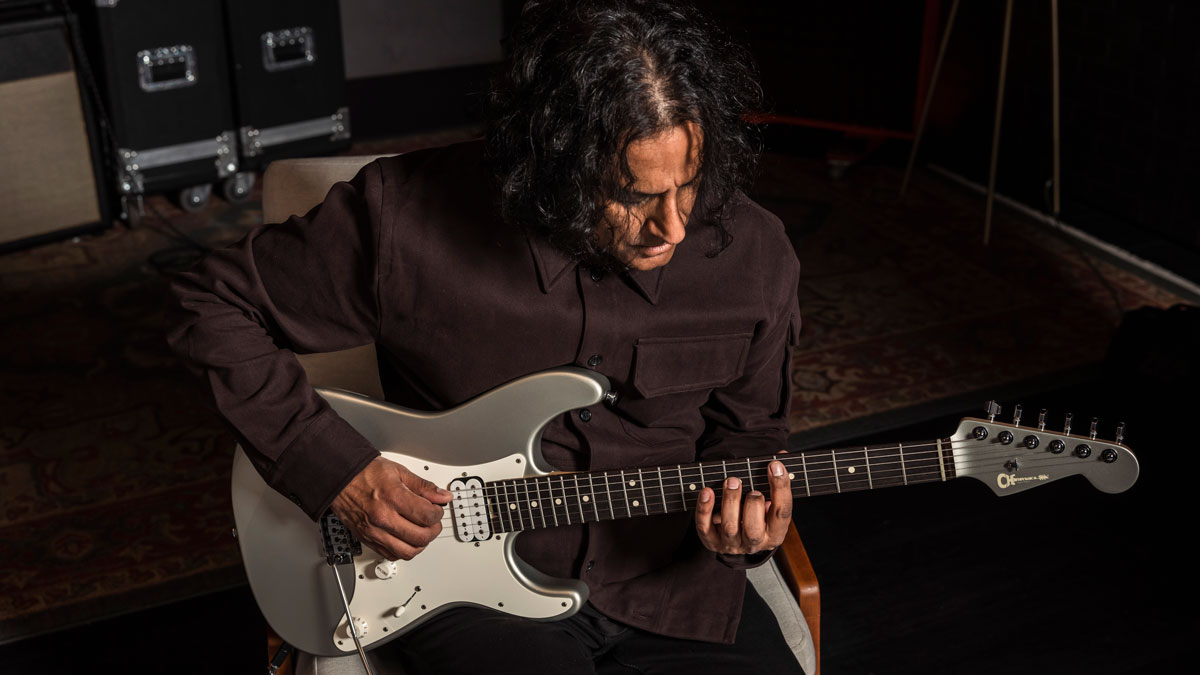Prashant Aswani explains why his sensational new signature Charvel is “basically a custom shop guitar, made in Mexico for $1,399”
The session ace and Greg Howe protegé has spec’d a signature guitar that takes inspiration from Pete Thorn and Guthrie Govan, and has resulted in one of Charvel’s most meticulously designed production-line models ever

“It’s basically a custom shop guitar, made in Mexico for $1,399,” smiles Prashant Aswani, summing up the concept behind his new signature guitar.
The Californian virtuoso has played custom shop axes on gigs and tours with the likes of Greg Howe, Christian Milian, and Justin Timberlake, as well as with Indian classical flautist Ronu Majumdar, so he knows what a guitar needs to perform in the spotlight. For the Prashant Aswani signature So-Cal, the goal was to bring that level of performance for an accessible price.
“I used to play guitars that were really unobtainable. Fans would always want to get those, but they were too expensive or just one-offs,” he explains. “When I started using the Charvel Pro-Mods, it was really a cool experience. I was getting all kinds of messages from fans that were getting the same guitar.”
Still, Aswani would make modifications to standard Charvel models to fit his needs. For his signature model, “I wanted a guitar that was just off the shelf, and you didn’t want to replace anything.”
Although it’s part of Charvel’s regular Pro-Mod range, the Prashant Aswani So-Cal is highly tailored from the standard specification. Some signature guitars are merely an existing model with a new finish; Aswani’s is almost entirely bespoke.
The body shape, neck joint, neck carve, radius, wood choices, and hardware all differ from the base So-Cal, in line with Aswani’s requirements. Many of his choices are unique in the Charvel range.


The result is a So-Cal that offers many of the best aspects of both vintage instruments and high-performance SuperStrats. The nitrocellulose finish, dark Indian rosewood fingerboard, and Wilkinson tremolo all say ‘classic Stratocaster’, while the all-access neck joint, 12” radius, locking bridge saddles, and custom-voiced humbuckers are ready for the most demanding technical challenges.
Get The Pick Newsletter
All the latest guitar news, interviews, lessons, reviews, deals and more, direct to your inbox!
Aswani says it’s ready for anything: “I have a ton of guitars, and they’re really for each specific purpose. For sessions and recording I wanted a guitar where I didn’t have to keep grabbing a different guitar, and nothing really existed to date that worked for me. This definitely is the one.”
A major boon is the new Wilkinson WVS130 tremolo, a first on any Charvel, featuring clever locking saddles developed with input from Pete Thorn. Together with locking tuners, it offers Floyd Rose-rivalling tuning stability with much more convenient string changes.
“The saddles are a game-changer,” Aswani confirms. “I’m a Floyd guy and have been forever. This reacts like a Floyd. I lubricate the nut and the bottom of the string tree, and I have zero tuning issues.”
Pickups can be a place to cut corners on affordable guitars, and Aswani was determined that wouldn’t be the case here. The twin humbuckers were voiced with the Charvel custom shop team that designed the pickups for the Guthrie Govan signature San Dimas.
I can take three or four of these exact guitars in different tunings, and they’ll work for everything – rhythms, leads, melodies – in any genre
“I’m kind of a pickup nut. I really wanted to create a pickup for this guitar,” he enthuses. “Les Pauls don’t work for my style, but PAFs have such a special sound. I wanted to get something a little more modern but stay in a vintage area. With high gain, if you have a medium or a low output pickup you get way bigger tones, both live and in the studio.”
The humbuckers have an Alnico III magnet, as found in some of the most desirable early PAFs, but are wound slightly hotter. The five-way selector again has different options from other Charvels: the humbuckers are available individually or together, along with the inside and outside coil combinations. Every position on the switch is hum-cancelling.
Aswani says it’s ended his need to take different guitars into the studio. “I can take three or four of these exact guitars in different tunings, and they’ll work for everything – rhythms, leads, melodies – in any genre, depending on the amp settings, of course.”
Some medium-output humbuckers can sound less than inspiring when split, but Aswani loves the split and full-power tones from these pickups equally.

“They achieved it, man,” he enthuses. “I don’t know how, because there can be a lot of weirdness and volume dips with split humbuckers, but you know that’s what Charvel can do with pickups. I think Guthrie Govan is the only other artist with Charvel pickups. I something made for the guitar that people won’t want to take out, and that’s exclusive to the guitar, too.”
While most So Cal models feature a classic 4-bolt neck joint, the Aswani So Cal has a recessed ‘shredder’s cut’ heel, also found on Marcus Sfogli and Guthrie Govan models. The body shape is contoured to suit, giving it different silhouette from both the standard So Cal and Dinky models. The heel is extremely ergonomic, giving access to every fret and string.
The feel is incredible. I've never seen a neck where it’s got the best of both worlds: a 42mm nut that tapers up into a wider heel. They pulled it off brilliantly
“It’s almost seamless, really, but there’s still a little leverage, which I like,“ Aswani notes. “It’s unlike a neck-through, which is a little weird for me.”
Charvel is perhaps most famous for playability, but even here Aswani has bravely modified the winning formula.
“The neck is super-tricked out and special on this guitar,” he explains. “It’s based on a speed neck but it’s my own profile. I love the feel of playing chords on a traditional Strat neck. We have a 42mm nut so it feels like a Strat lower down, but we tapered up to a heel that would be like a 43 millimeter nut taper up so you don't fall off the edges of the fretboard when you’re ripping leads.
“The feel is incredible. I've never seen a neck where it’s got the best of both worlds: a 42mm nut that tapers up into a wider heel. They pulled it off brilliantly.”

“Rather than doing a compound radius I just went with a straight 12”, like Eric Johnson uses on his Strat,” Aswani continues. “It just felt really good and it also makes setup really easy too, for setting the radius on the bridge.”
The Inca Silver finish has a matching headstock, which Aswani stresses is “important for a SuperStrat!” The nitro finish, meanwhile, guarantees that the guitar will age gracefully: “There’s just something about the feel of nitro. It’s so smooth, and it helps the guitar breathe.”
I incorporated things that I think people would really like, things people I was talking to really wanted. This is what we ended up with
The vintage Strat heritage is also present in the choice of woods. “I ended up going with a dark Indian rosewood with a maple neck and an alder body, because I'm you know the early 60s pre-CBS Strats are some of my favourite Strats,” Aswani explains, offering probably his most uncontroversial opinion. “There’s something special about that combination. It’s made so many thousands and thousands of great tunes over the decades.”
Although the Prashant Aswani So Cal is tuned to his specifications, Aswani stresses that this is a guitar for everybody.
“It wasn't about going crazy with my ego, even though this is the perfect guitar for me. I incorporated things that I think people would really like, things people I was talking to really wanted. This is what we ended up with. The team at Charvel, Mike Tempesta and Mike Brown, just understand how to deliver something in reality from the words I give them. It’s really remarkable.”
- For more information on the Prashant Aswani Signature Pro-Mod So-Cal PA28, head to Charvel.
Jenna writes for Total Guitar and Guitar World, and is the former classic rock columnist for Guitar Techniques. She studied with Guthrie Govan at BIMM, and has taught guitar for 15 years. She's toured in 10 countries and played on a Top 10 album (in Sweden).
“I didn’t think anybody would believe I got it from George Harrison. I figured they’d call me a liar”: Vintage guitar guru Norman Harris names the 5 most memorable guitars that have come through Norman's Rare Guitars
“What blew me away was that everyone wanted the curly maple top. People were calling, saying, ‘I’ve got to have the bird inlays’”: Paul Reed Smith on raising the Standard 24, finally cracking the noise-free guitar and why John Sykes is a tone hero



![[from left] George Harrison with his Gretsch Country Gentleman, Norman Harris of Norman's Rare Guitars holds a gold-top Les Paul, John Fogerty with his legendary 1969 Rickenbacker](https://cdn.mos.cms.futurecdn.net/TuH3nuhn9etqjdn5sy4ntW.jpg)







